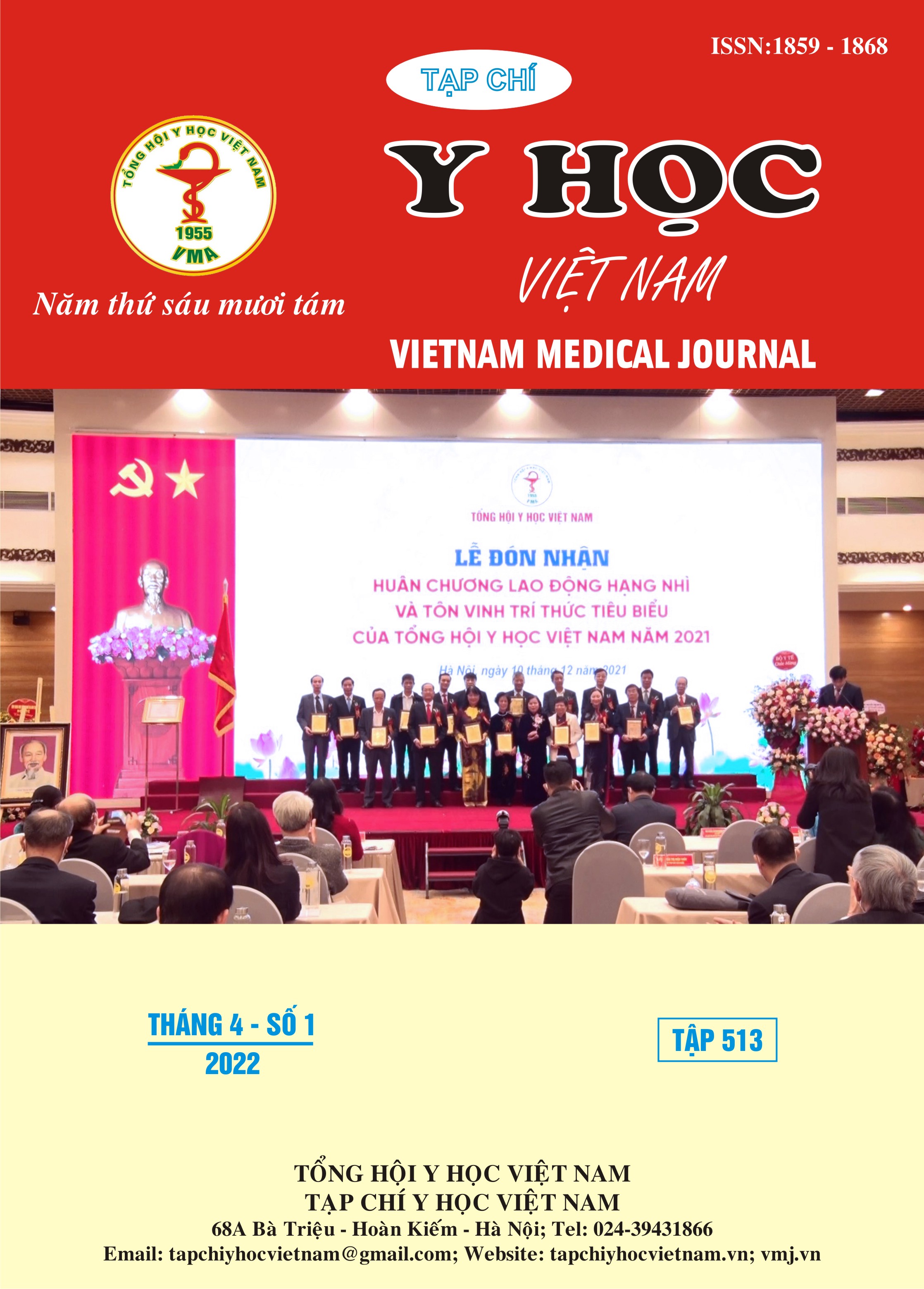THE RATE OF ANTIMICROBIAL DESORPTION AND THE ANTIMICROBIAL EFFECT IN VITRO OF FIBRIN - CEFAZOLIN
Main Article Content
Abstract
Objective: To evaluate the change of the index of F waves in the nerve root compression of the cervical and lumbar vertebrae. Methods: A cross-sectional study on 2 groups: the control group consisted of 30 electromyography results of subjects without peripheral neuropathy; The group of diseases included 60 electromyography results of the patients who were determined by the clinician to have compression of the nerve roots in the cervical vertebra (30 results) or lumbar vertebrae (30 results). F wave index were determined on the four limbs in both study groups by a Nicolet Viking Quest/Natus electromyographer. Result: F wave minimum latency long in the arm from 11-33%; In the legs from 0-8%, the frequency of F waves reduced is 76% in the median nerve, the ulnar nerve is 39%, the peroneal nerve mác is 26%, the tibial nerve is 0%. The difference in frequency of F waves between the healthy limb and the diseased limb of the median nerve (93%) in the peroneal nerve (81%), in the ulnar nerve 57%, in the tibial nerve not there is a difference. Conclusion: In order to avoid missing the diagnosis of nerve root compression, it is necessary to combine all F-wave index. Among the parameters, it is necessary to compare the difference in frequency of occurrence of F waves between healthy and affected limbs, this is the most sensitive indicator, the second is a sign of decreasing frequency of occurrence of F waves, F wave minimum latency long appearing infrequently.
Article Details
Keywords
F wave, nerve root compression
References
2. Trần Công Chính và cộng sự, 2017, Nghiên cứu đặc điểm lâm sàng, hình ảnh cộng hưởng từ, dẫn truyền thần kinh ở bệnh nhân thoát vị đĩa đệm cột sống thắt lưng, tạp chí Y-Dược học trường ĐH Y-Dược Huế, tập 7, số 4, tr. 107-112.
3. Phan Việt Nga và cộng sự, 2017, Thoát vị đĩa đệm cột sống cổ chẩn đoán và điều trị nội khoa, Nhà xuất bản Y học.
4. Chawalparit O et al, 2006, The limited protocol MRI in diagnosis of lumbar disc herniation. J Med Assoc Thai. 89(2),182-9.
5. Ghosh S., 2010, F wave parameters of normal ulnar and median nerves. Indian J Med Res, 21, 47–50.
6. Li, W., et al, (2018), Diagnosis of Compressed Nerve Root in Lumbar Disc Herniation Patients by Surface Electromyography. Orthopaedic surgery, 10(1), 47-55.
7. Nguyen Van Chuong et al, 2019, Pain incidence, assessment, and management in Vietnam: a cross-sectional study of 12,136 Respondents; Journal of Pain Research;12, 769–777.
8. Zheng Chaojun et al, 2018, F-waves of peroneal and tibial nerves in the differential diagnosis and follow-up evaluation of L5 and S1 radiculopathies. European Spine Journal, doi:10.1007/s00586-018-5650-9.


